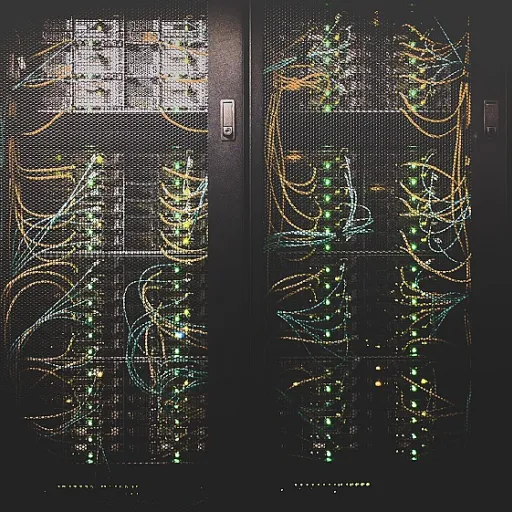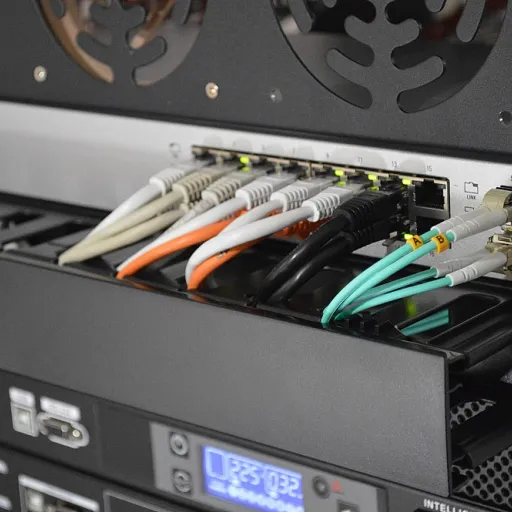
The Evolution of Self-Checkout Systems
The Journey from Traditional to AI-Powered Checkout
The retail industry has witnessed a significant transformation in its checkout systems over the years. Initially, traditional checkout counters were the norm, where cashiers manually scanned items and processed payments. This method, while effective, often led to long queues and a less-than-ideal shopping experience for customers. As technology advanced, the introduction of self-checkout kiosks marked a pivotal shift. These systems allowed customers to scan and bag their own items, offering a more efficient and personalized shopping experience.
However, self-checkout systems were not without their challenges. Issues such as produce recognition and loss prevention posed significant hurdles for retailers. The need for a more sophisticated solution became apparent, paving the way for AI-powered checkout systems. These systems, driven by artificial intelligence and computer vision, have revolutionized the checkout process by enabling real-time item identification and inventory management.
AI's integration into self-checkout systems has enhanced the customer experience by reducing wait times and improving accuracy. Retailers benefit from data-driven insights that help optimize inventory and prevent losses. As we delve deeper into the role of AI in enhancing self-checkout, it becomes clear that the future of retail is being reshaped by these technological advancements. For more insights on how AI is transforming various sectors, explore the promise of valuable AI in software development.
AI's Role in Enhancing Self-Checkout
AI's Transformative Impact on Self-Checkout
The integration of artificial intelligence into self-checkout systems is reshaping the retail landscape, offering a more seamless and efficient shopping experience for customers. AI-powered checkout systems leverage advanced technologies like computer vision and machine learning to enhance the traditional checkout process, making it faster and more accurate.
One of the key innovations is the use of computer vision to identify items without the need for manual scanning. This technology allows service kiosks to recognize products, including fresh produce, in real time. By analyzing visual data, these systems can accurately identify items, reducing the time customers spend at the checkout and minimizing errors.
AI-driven checkout systems also contribute to improved inventory management. By tracking the items scanned and purchased, retailers can maintain accurate stock levels and optimize their supply chain operations. This not only enhances the shopping experience but also supports loss prevention by ensuring that all items are accounted for.
Companies like Mashgin are at the forefront of this revolution, developing AI-powered kiosks that streamline the checkout process. These systems are designed to integrate with existing retail infrastructure, allowing retailers to upgrade their services without significant overhauls.
Moreover, AI enhances customer service by providing a more personalized shopping experience. By analyzing customer data, retailers can tailor their offerings and promotions to individual preferences, further enhancing customer satisfaction.
For those interested in exploring alternatives to AI-driven solutions, this article provides insights into other innovative approaches in the retail industry.
How Item Highlighting Works
Understanding the Mechanics of Item Highlighting
In the rapidly evolving landscape of retail, AI-powered checkout systems are transforming the shopping experience by integrating advanced technologies like computer vision and machine learning. One of the standout features in this domain is item highlighting, a process that enhances the efficiency and accuracy of self-checkout systems.
Item highlighting works by utilizing computer vision to identify items as they are scanned or placed in the checkout area. This technology is particularly beneficial for recognizing fresh produce, which often lacks barcodes. By analyzing visual data in real time, the system can accurately categorize and price these items, reducing the need for manual input from customers.
Moreover, item highlighting is driven by sophisticated algorithms that learn from vast datasets. These algorithms improve over time, enhancing the system's ability to recognize a wide range of products. This not only speeds up the checkout process but also minimizes errors, leading to a smoother customer experience.
Retailers benefit significantly from this technology as it integrates seamlessly with existing inventory management systems. By providing real-time data on sales and stock levels, item highlighting aids in loss prevention and ensures that shelves are replenished promptly. This level of efficiency is crucial in maintaining a competitive edge in the retail industry.
Service kiosks equipped with item highlighting capabilities offer a more personalized customer service experience. Customers can enjoy a faster checkout process, reducing wait times and enhancing overall satisfaction. As AI continues to evolve, the potential for further innovations in this area remains vast, promising even more streamlined and customer-friendly shopping experiences.
Benefits for Retailers and Customers
Advantages for Both Sides of the Counter
The integration of AI-powered self-checkout systems in retail stores brings a multitude of benefits to both retailers and customers. These systems, driven by advanced computer vision and machine learning technologies, transform the traditional checkout process into a seamless experience.
Enhanced Customer Experience
For customers, the AI-powered checkout systems offer a faster and more efficient shopping experience. By utilizing computer vision to identify items, including fresh produce, the checkout process becomes quicker, reducing wait times and enhancing overall satisfaction. The ability to scan and recognize items in real time ensures that customers spend less time at the service kiosks, allowing them to enjoy a more streamlined shopping journey.
Operational Efficiency for Retailers
Retailers benefit significantly from these AI-driven systems. With improved inventory management and produce recognition capabilities, stores can maintain accurate stock levels and reduce the risk of loss. The data-driven insights provided by these systems enable retailers to optimize their operations, ensuring that the right products are available at the right time. Additionally, the integration of AI in checkout systems helps in loss prevention by accurately identifying items and reducing human errors.
Cost-Effective and Scalable Solutions
The implementation of AI-powered self-checkout kiosks can lead to cost savings for retailers. By reducing the need for extensive staff at checkout counters, stores can allocate resources more effectively. Moreover, these systems are scalable, allowing retailers to adapt to varying customer demands and store sizes without significant additional investments.
In summary, the adoption of AI-powered self-checkout systems in the retail industry not only enhances the customer experience but also provides retailers with efficient, cost-effective solutions that drive operational success.
Challenges and Considerations
Overcoming Hurdles in AI-Powered Checkout Systems
While AI-powered self-checkout systems are revolutionizing the retail industry, they come with their own set of challenges and considerations. Retailers and customers alike must navigate these obstacles to fully harness the benefits of this technology.
Technical Challenges and Integration
Integrating AI-driven checkout systems with existing store infrastructure can be complex. Retailers need to ensure that these systems seamlessly connect with inventory management and point-of-sale systems. Additionally, the accuracy of computer vision and machine learning algorithms in identifying items, especially fresh produce, is crucial. Misidentification can lead to customer dissatisfaction and inventory discrepancies.
Data Privacy and Security Concerns
With the increased use of AI and data-driven checkout processes, concerns about data privacy and security are paramount. Retailers must ensure that customer data is protected and that systems comply with relevant data protection regulations. This is essential for maintaining trust and providing a secure shopping experience.
Customer Experience and Adaptation
While AI-powered kiosks aim to enhance the customer experience, there is a learning curve for customers unfamiliar with the technology. Retailers must provide adequate support and clear instructions to ensure a smooth transition. Additionally, the systems must be intuitive and user-friendly to avoid frustrating the customer.
Cost and Maintenance
Implementing AI-powered checkout systems can be costly. Retailers need to consider the initial investment and ongoing maintenance costs. Regular updates and system checks are necessary to ensure optimal performance and to address any technical issues that may arise over time.
Balancing Automation and Human Interaction
While automation can streamline the checkout process, it is important not to eliminate human interaction entirely. Customer service remains a critical component of the shopping experience. Retailers must find a balance between automated systems and human assistance to cater to diverse customer needs.
By addressing these challenges, retailers can optimize their AI-powered checkout systems, ultimately enhancing the shopping experience for customers and improving operational efficiency.
The Future of AI in Retail
AI-Driven Innovations in Retail
The future of AI in retail is poised to transform the shopping experience for both customers and retailers. As AI-powered checkout systems continue to evolve, they will become more integrated with existing retail infrastructure, enhancing the overall customer experience and streamlining operations.
Enhancing Customer Experience
AI-driven checkout systems are set to revolutionize how customers interact with stores. By leveraging computer vision and machine learning, these systems can identify items in real time, making the checkout process faster and more efficient. This not only reduces wait times but also improves the overall shopping experience for customers.
Improving Inventory Management
For retailers, AI offers significant advantages in inventory management. By using data-driven insights, retailers can optimize stock levels, reduce waste, and ensure that fresh produce and other items are always available. This level of precision in inventory management helps in minimizing losses and improving profitability.
Advancements in Loss Prevention
AI-powered systems also play a crucial role in loss prevention. With advanced vision systems, retailers can monitor customer behavior and identify potential thefts or errors during the checkout process. This not only protects the store's assets but also enhances customer service by ensuring a smooth and secure shopping experience.
Future Prospects
As AI technology continues to advance, we can expect further innovations in service kiosks and self-checkout systems. The integration of AI with other technologies will lead to more personalized and efficient shopping experiences, ultimately driving the retail industry forward. Retailers who embrace these changes will be better positioned to meet the evolving needs of their customers and stay competitive in the market.















